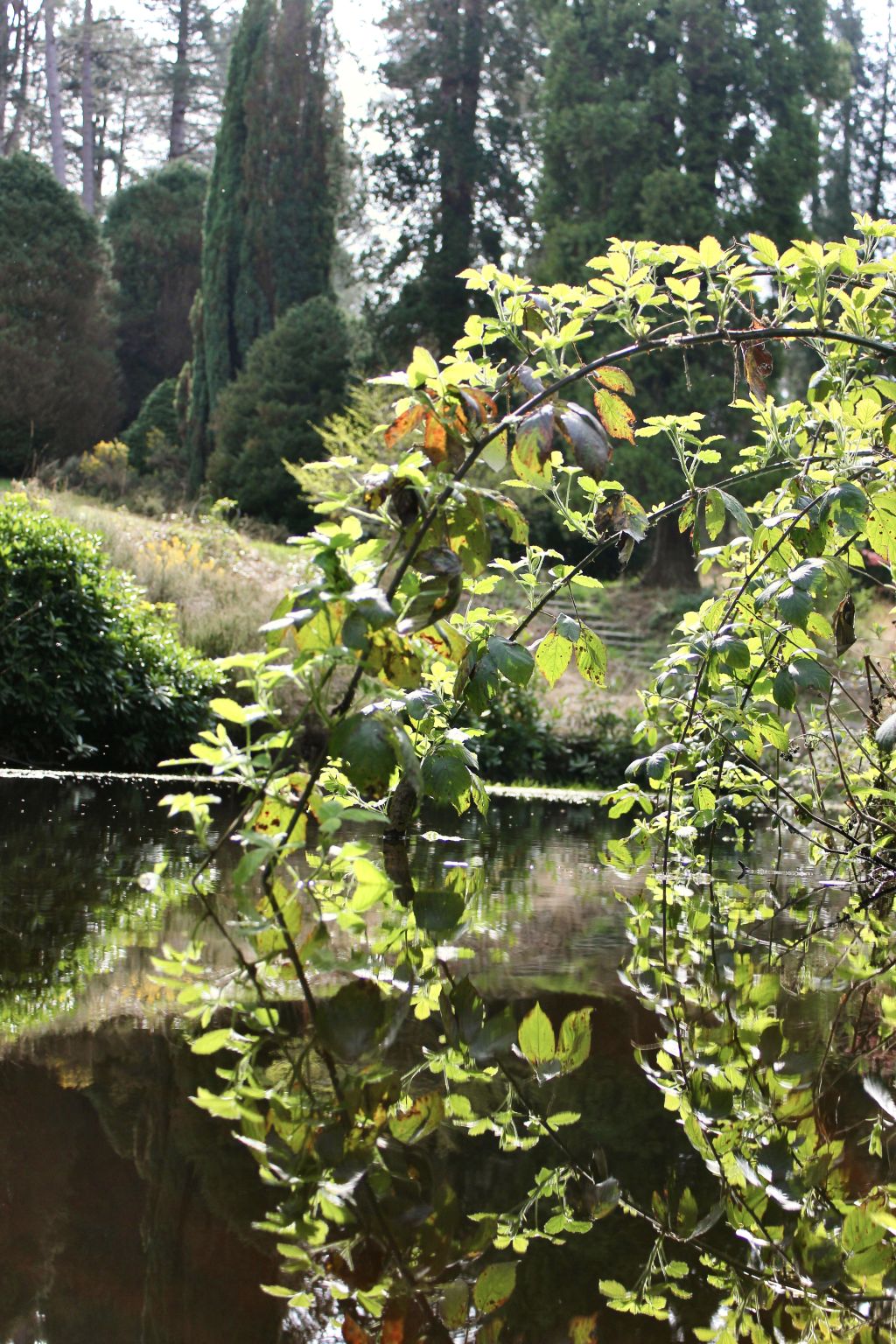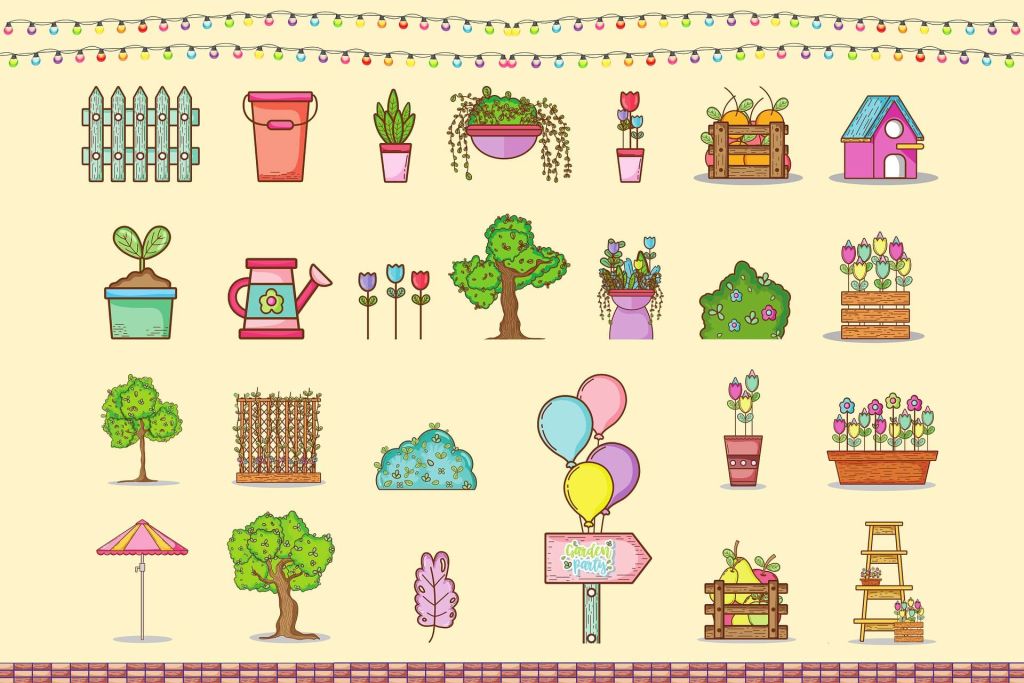
In Britain, we’re never happier than when we can moan about the weather. And while we might be grateful when we don’t get a washout summer, the opposite can cause some serious stress on the garden. Heatwaves are great for when you’re on the beach with a pina colada in hand, but not so wonderful when your hydrangeas are dehydrated.
But, luckily there are some simple ways to look after your garden when the heat hits. From repurposing the parasol to saying no to mowing, here are five ways to protect your garden during a heatwave
Water well
In extreme temperatures, it might seem logical to give your plants lots more water, but there’s actually a delicate balancing act between offering hydration, and oversaturating them.
Firstly, get your timing right - plants need to be watered when the temperatures are cooler so that they have the chance to drink up as much water as possible before the ground gets too warm. The best time to do this is in the early morning before the garden heats up.
When it comes to how much to give them, less is actually more. If you give your plants too much water in the heat it can hinder them acclimatising to the warmer weather, and can cause them to get stressed. To check if you need to water your plants, stick your index finger into the soil near to the root. If the soil is wet below the surface then the plant doesn’t need more water.
Add a layer of protection
Just like we reach for the SPF when it’s hot, you can help to protect your plants by adding a layer of mulch - it’ll act like a barrier against the sun, and will also help to relieve the pressure the sun puts on the plants and flowers, by retaining some of the moisture in the soil.
Apply a layer at least a couple of inches deep on top of your soil to protect your plant’s roots.
No mow
There’s probably nothing you fancy doing less in the heat than mowing the lawn, and the good news is it’s actually beneficial not to. That’s right - we officially give you the go ahead to do nothing. Keeping the grass a little bit longer helps it to protect itself because the blades will cast shadows on other blades as the sun moves around the garden. Also don’t worry about watering your grass even if it starts to look a bit brown and dishevelled - it’ll return to its former glory once the weather cools down and we have some rain.
If you want to give it a helping hand come autumn, use a lawn care fertiliser to aid disease resistance and cold hardiness as well as improving drought tolerance.
Mix in some media
Adding growing media to your soil helps to increase water and nutrient retention, which is essential in hotter temperatures. If you have container plants, then the addition of some growing media could be particularly beneficial, as these plants can struggle in the heat to keep the soil moist.
Sort some shade
Parasols and beach umbrellas are usually there to stop us scorching while we enjoy an al fresco lunch, but they can be put to other uses too - like protecting your plants from the intense rays of the sun in a heatwave. It might not be possible to shade all of your plants, especially if you have a large garden, but anything that’s delicate and requires a lot of TLC should be your priority - you can use umbrellas, tarpaulin, garden parasols or even your bbq cover to create areas of shade where your plants can enjoy a little respite from the sun.

As we move into July and the weather hots up we also edge closer to the school summer holidays. As a child, the prospect of weeks and weeks of glorious sun seems exciting, but as a parent it can be somewhat daunting - how exactly do you keep the kids entertained? Well, worry no more - get them out in the garden and the great outdoors offers great opportunities. Here we’ve got some suggestions for ways to keep little fingers busy this summer - including tasks that’ll actually help you get ahead in the garden. Yes, really. You’ll be sippijng that G&T in your hammock before you know it…
Feed your feathered friends
Not only is making your own bird feeder a simple and inexpensive idea, it’s also great because it creates a long-term object of focus; kids will love bird spotting and discovering which species are frequenting their feeder.
All you need to make one is an empty yoghurt pot, some string and then some nuts, seeds and lard. Mix your ingredients together, then pierce a hole in the bottom of the yoghurt pot and loop the string through, tying a knot to secure it. Fill the pot with your mixture, then hang it outside (upside down like a bell) and watch the birds visit the garden to enjoy your handiwork!
Build a hedgehog home
Hedgehogs are in decline, so a great way to help them is to make them a home in your garden. Hedgehogs don’t like a tidy garden so if there was ever an excuse to forego the weeding, this is it!
Our prickly friends hibernate between October and March, so the summertime is the perfect time to get building them a house they can shelter in during the colder months. The Wildlife Trusts have some really helpful guides to show you how to make a home for your spiky pals, and you really don’t need very much at all.
Grow your own dinner
Another fun thing to do with children over the summer is help them to grow their own produce from seed. Whether it’s lettuce, green beans, cucumber or tomatoes, your little ones will love watching as their plants get bigger and eventually end up on their plates. This is a great way to teach them about where their food comes from, too.
If you fancy going one step further, you could get the kids involved in making their own labels for their fruit and veg. Just get some old lolly sticks (usually plentiful at this time of year!) and get them to paint them in their favourite colours, before writing the names of the different seeds on.
Make a splash
Watering the garden in the summer can become a tad laborious, but that’s where little hands can come in handy. Give kids the role of being chief garden waterers, and each day you’ll have a bit of assistance. If they’re a tad small for the hosepipe (or you’re not sure you can trust them not to cause a minor flood) then perhaps get them their own watering cans that they can use to complete their special task.
Prepare a patio pond
Another way to attract wildlife to your garden and keep the kids entertained in the process, is to create your own patio pond. Don’t worry - you don’t need to dig any holes for this. All you need is a container with no drainage holes, some pond-friendly plants, and an oxygenating plant (such as arrowhead or eelgrass) which will help to keep the water clear. Place all of your plants in the pot, then top up with water and watch to see which wildlife pays you a visit over the summer!
Keep your container in a fairly shady spot if you can, as this will help both the plants and the wildlife.
Delegate decorating
If you're hosting a barbecue or summer party, then a good way to keep little hands busy (and out of the bowls of crisps) is to get them on decoration duty. Perhaps they can pick flowers to make table arrangements, create garlands from leaves, or make place names by finding stones and writing guests’ names on them.
Create a nature challenge
Why not create a bit of a friendly competition or a challenge during the summer holidays? Make a list of things to find in the garden - it could be bugs, plants, flowers or even different shapes of clouds. Then, challenge your children to find all of the items on the list over the course of the summer holidays. You could extend to things outside of your garden too, so that they keep the challenge going even while they’re out and about - if you’re heading on holiday, add things they might be able to see in nature in your chosen destination, or if you’re staying at home but planning day trips you could incorporate things like seaside items or creatures.

